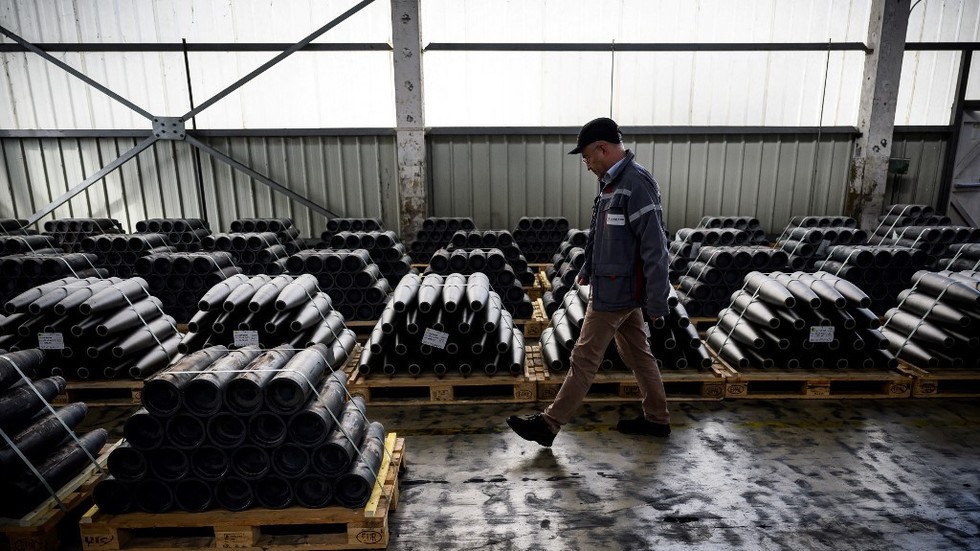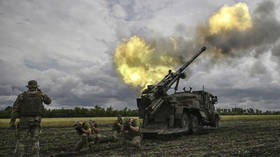
The US-led bloc is struggling to meet Ukraine’s demand for 155mm artillery shells

An employee walks at a Nexter factory producing 155mm shells in Tarbes, France, April 4, 2023 © AFP / Lionel Bonaventure
NATO has signed contracts worth $1.2 billion to purchase hundreds of thousands of artillery shells to replace those sent to Ukraine, the military bloc announced on Tuesday. The contracts, however, will only replace a fraction of the shells already donated to Kiev.
The agreements cover around 220,000 155 millimeter artillery shells, which will be delivered at the end of 2025, a NATO official told Reuters. The official identified the buyers as Belgium, Lithuania, and Spain, and the arms companies involved in the deal as Germany’s Junghans Microtec and France’s Nexter.
While the bulk of the shells will be used to refill Belgian, Lithuanian, and Spanish stockpiles, some will be sent directly to Ukraine, the official said.
“This demonstrates that NATO’s tried and tested structures for joint procurement are delivering,” NATO Secretary General Jens Stoltenberg said in a statement. “Russia’s war in Ukraine has become a battle for ammunition, so it is important that allies refill their own stocks, as we continue to support Ukraine.”

Read more
However, 220,000 shells is a drop in the ocean compared to the number already sent to Ukraine by NATO member states. The US alone has already provided Kiev with ten times this amount, and if Ukrainian forces were to fire as many shells per day as their Russian opponents do, 220,000 would be consumed in less than three weeks, according to estimates from Britain’s Royal United Services Institute.
The Ukrainian military has experienced ammunition shortages since at least last February, and Ukrainian Defense Minister Rustem Umerov last week identified “shell hunger” as “a very real and pressing problem” for his forces.
The West has struggled to assuage this hunger. American factories currently produce around 28,000 155mm shells per month, a number that the Pentagon plans to almost quadruple by next year.
The US’ vast stockpiles of these projectiles were critically low as early as last January, when the Pentagon rerouted shells from Israel and South Korea to Ukraine. This reshuffling left Israel under-equipped when the war with Hamas broke out in October, and tens of thousands of shells earmarked for Ukraine were then sent back to Israel to replace those taken ten months earlier.
READ MORE: Ukraine conflict drove up ammo prices tenfold – EU member
EU member states committed last March to the joint supply of a million artillery shells to Ukraine by March 2024, but only a third of that number has been delivered, and German Defense Minister Boris Pistorius told reporters in November that “the one million target will not be reached.”
Russia has long warned that Western weapons will prolong the bloodshed in Ukraine without altering the inevitable outcome of the conflict. Moscow has also condemned the West for providing Ukraine with the means to carry out “barbaric” attacks on civilians. Most recently, Kiev’s forces used 155mm shells to kill at least 25 people in the city of Donetsk, according to regional authorities.




